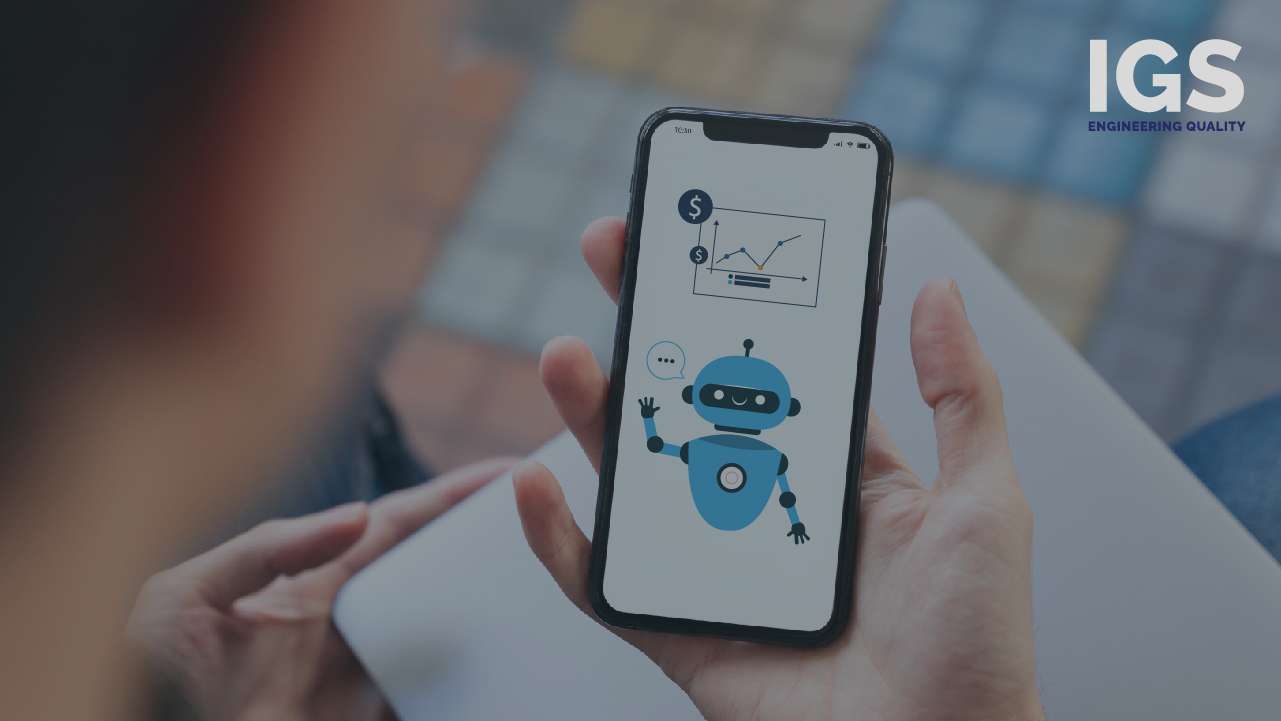Evaluating the Quality of Chatbots and Intelligent Conversational Agents
Author – Aparajita Tiwari (Program Manager)

Introduction:
Chatbots and conversational AI agents are being used by businesses to simulate human-like conversations with their customers using voice or text. The use of intelligent conversational agents reduces the burden on employees and negates the chances of an unpleasant customer experience. It is important for conversational ai chatbots to be emotionally intelligent to enhance customer experience and upscale business. This is where testing of conversational ai chatbots comes into the picture. They are mostly used in virtual assistance and can be improved by companies using artificial intelligence (AI) and machine learning.
Difference Between a Traditional Chatbot and Conversational Chatbot:
Businesses require efficient chatbots and intelligent conversational agents in order to enhance customer experience and upscale their business. Many times, there is a struggle in building intelligent chatbots that can comprehend user intent and respond accordingly. Here is a list of various methods, processes, and tools that can be used by businesses in analyzing and enhancing the quality of chatbots and conversational AI.

Chatbots and conversational AI are terms often used interchangeably. Chatbots are computer programs designed using natural language input to simulate human-like conversations with users in the form of text or voice, especially over the internet. They are rule-based, that is, chatbots are trained to answer only a specific set of questions, such as FAQs. Conversational AI agents, on the other hand, are smarter than chatbots as they use artificial intelligence and machine learning to make chatbots more capable of human conversations. They are more efficient at spotting patterns and making recommendations. Hence, chatbots require conversational AI to become smarter and more powerful.
Important Benefits of integrating AI Conversational Agents into your business:
Customer service chats and commercial social media interactions in businesses are increasingly being managed by intelligent conversational agents. Businesses can tackle customer interactions with accuracy by incorporating quality chatbots. A conversational AI chatbot can be designed through AI and machine learning to be emotionally intelligent and relevant to local culture. Some key benefits of using conversational bots in businesses are:

Why is Quality Evaluation of Conversational AI Important:
Conversational AI chatbots become an interface for businesses through which they interact with end users. It is important that these conversational agents understand the context of conversations and are sentimental so as to provide customer satisfaction. An emotionally intelligent chatbot forms stronger relationships with people.
How to test emotionally intelligent chatbots:
Integrating AI with emotional intelligence (EI) enables intelligent conversational agents to detect emotions in conversations and respond to them accordingly. While machine learning algorithms are used to make classifications or predictions, Testing conversational ai chatbots for EI can be done on the basis of input data, such as a questionnaire for shopping assistance and analyzing the accuracy and sensibility of the answers generated. A quality conversational bot will integrate AI and machine learning to detect the pattern of the conversation and make effective recommendations accordingly.
Quality Metrics of Conversational AI and AI Chatbot:
To maximize the potential of your chatbots and conversational AI, you will need to measure their performance. The following metrics can be used to measure the quality of chatbots:

Conversational AI agents are chatbots made more accurate and intelligent using AI and machine learning. The following metrics can be used to measure the quality of Conversational AI:

Phases of testing a chatbot:
Chatbot testing is complex and does not have a one-size-fits-all approach. Successful chatbot testing is done in two phases:

Methods of Testing a chatbot:
Chatbot testing is done by creating all possible scenarios that can take place in the conversation with the user. It is different from traditional software or mobile app testing as there is no predefined data to run through the chatbot analytics. Methods of chatbot testing are as follows:
Conversational Design testing:
This method uses tools to understand the basic user input and intent and verify the chatbot on conversation flow, intent, response, casual talk, fallback, navigation, and emotions. It tests the chatbot for the tonality of the conversation, such as positive responses, negative responses and expressions. It checks how the bot improves user experience through casual conversations and its efficiency to answer irrelevant questions in between a conversation. It creates chatbot testing scenarios for navigational cases, such as the user wanting to skip the conversation and cancel the order, and sees whether the chatbot can handle such cases. It also checks whether the chatbot is trained to understand emotions, such as happiness, anger, sadness, etc., and is able to respond accordingly.
Entities testing:
This uses entities or keywords from training phrases to check the efficiency of chatbots. In this process, the bot requests information to fulfill the user’s request. The data is used to fetch relevant information and the results are then shared with the user as a response. User acceptance testing is important to ensure the chatbot’s quality. Testing the chatbot with a number of users vastly improves the quality of the chatbot.
Tools to test the quality of a chatbot
Some of the key tools to test the quality of a chatbot are as follows:

Process of Testing an AI Chatbot:
The following process can be used in testing conversational AI chatbots:

Chatbot testing is done by creating all possible scenarios that can take place in the conversation with the user. It is different from traditional software or mobile app testing as there is no predefined data to run through the chatbot analytics. Methods of chatbot testing are as follows:

Tools to Test the Quality of a Conversational AI Chatbot:
Some of the conversational AI chatbots testing tools are:

How Conversation AI Works in AI Chatbot?
Conversational AI in AI chatbots uses deep learning algorithms and part of machine learning techniques, to imitate human responses and handle user queries. They learn from real interactions and can be trained easily using historical data. They respond to each question based on their understanding and learning acquired through the machine learning engine.
Conclusion
The quality of an AI chatbot boils down to its accuracy, precision, sensibility and specificity. AI Conversational bots are a faster way of conversing with customers and deliver greater customer satisfaction. Their ability to understand conversations outside pre-programmed commands and easily hold engaging conversations with customers are the reasons why their use in the business landscape is increasing rapidly.
